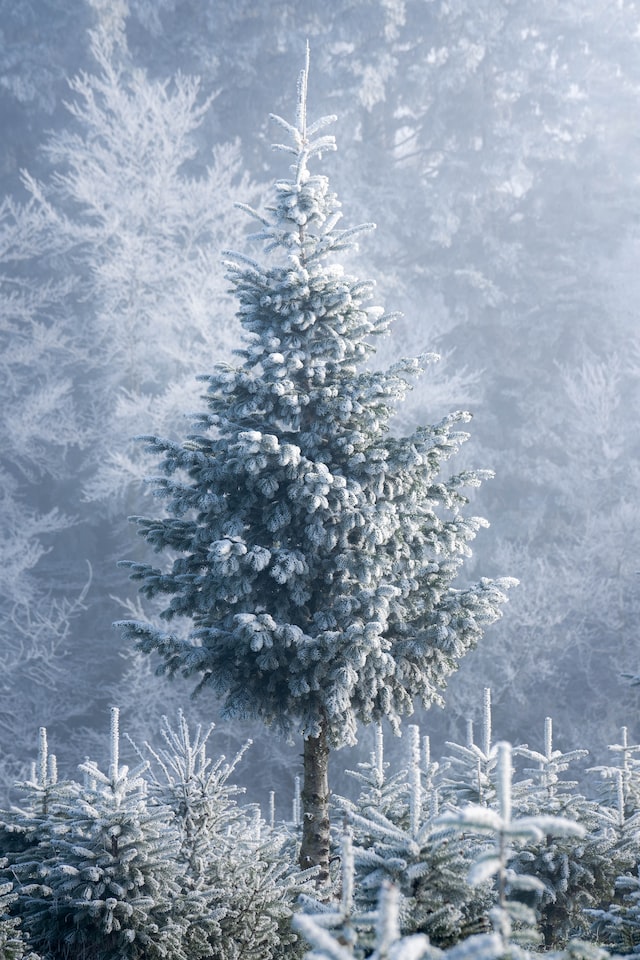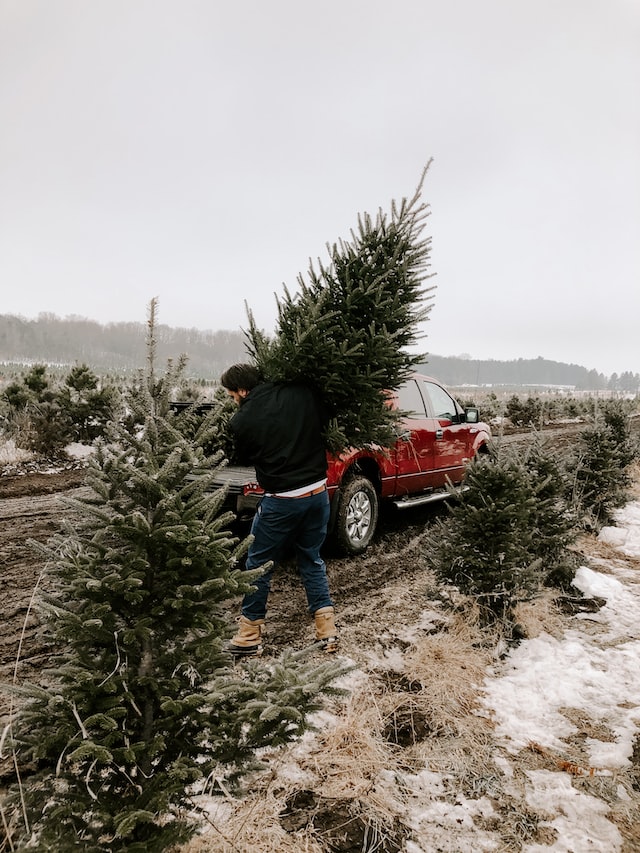The holidays can be a busy time of year for many, and one common question from kids is “How long does it take for a Christmas tree to grow?”
Growing your own tree can be a rewarding endeavor, but it requires lots of dedication and perseverance.
Planting Seedlings
Growing your own Christmas tree can be an enjoyable endeavor, but it requires a considerable amount of time–particularly if you start from seed or sapling.
Factors such as soil type and climate can influence how quickly a Christmas tree grows, so it’s essential to do some research on which varieties work best in your region before beginning planting.
One of the best ways to determine what type of Christmas tree you should grow is by visiting your local nursery and asking for their recommendations. They can tell you which varieties will thrive in your climate and soil conditions, plus provide multiple options for various planting areas.
Once your Christmas tree seedlings have grown sufficiently, you can plant them in an area with plenty of light and water. Whether using a raised garden bed or an established field, be sure to give your sprouts an extensive root system for healthy growth.

Depending on the species of tree you’re planting, it may take up to 4 or 5 years for your seedlings to reach full height and be suitable for permanent planting. That is why many growers choose to house their Christmas tree seedlings in special beds for several years before transplanting them directly into the field.
Another option is to purchase pre-grown seedlings from a reliable company and have them delivered directly to you. This may be the best solution if you aren’t experienced in tree growing or need to expedite planting your saplings quickly.
Finally, you could plant your seedlings in deep-cell containers known as Rootrainers. These are basically plastic boxes filled with potting soil that are planted directly in the ground. This method helps create a branched root system and prevents any circling roots from forming around them.
Once your Christmas tree seedlings reach a height of 8′, it’s time to transplant them outdoors in their permanent spot. Mark the spot with a marker and ensure they get plenty of water once planted – up to 1 gallon daily during their first week in the ground! They’ll become extremely thirsty during this period, so make sure you check on their water levels both morning and night during this critical first week.
Watering
Once you’ve selected a tree for your holiday decor, it’s essential to keep it hydrated so that it stays vibrant and healthy. Doing this will guarantee its stunning aesthetic as well as providing it with an invigorating scent all season long.
No matter if you purchase a live or artificial tree, it is essential that you water it properly before bringing it home. Trees don’t have their own natural water supply like plants do and can quickly become dehydrated and eventually die off if not taken care of correctly.
The amount of water a Christmas tree needs varies based on its size and species. Smaller, thinner trees require less frequent watering than larger and fuller ones; additionally, climate and location can influence this need; for instance, in warmer climates with lower humidity levels your tree may require more watering than one situated in cooler conditions with higher humidity levels.
Before placing your tree in a stand, cut away at least an inch from its base with a straight, level cut that exposes the vessel that absorbs most water. Afterwards, fill the stand with fresh water immediately.
Additionally, avoid trimming the sides of your tree’s trunk as this will decrease its capacity to absorb water. Doing so could cause the tree to dry out faster and become brittle.
Once you’ve finished watering the tree, let it soak for at least 12 hours before taking it home. Check the water level of the tree each day and replenish as necessary.
For the first week or so, you’ll likely need to add about a gallon of water each day. That’s because newly planted trees absorb a lot of moisture during their first few days indoors.
Maintain the moisture of your Christmas tree using a special waterer or pail and bucket set up in your home. Some of these have sensors and alarms that will notify you when the tree becomes too dry.
You can purchase a humidifier for your tree, but this won’t replace regular watering. In fact, it could actually drier out the tree and pose a fire hazard.
Pruning
Christmas trees are grown for their aesthetic beauty, so it is important to maintain them at the proper height. Unfortunately, pruning too extensively or hastily can lead to open wounds where bacteria and viruses can enter, creating a breeding ground for disease.
Evergreen trees such as pines and spruces require pruning every year starting when they reach 2 to 3 feet tall (about two years after planting), while firs should be pruned more frequently until they reach about 4 feet high. Pruning helps promote branch growth, stimulate internodal buds (spruces and firs only) between annual whorls of branches, and helps keep a desirable shape.
Pruning should be done during late summer or autumn, when new buds are most active. Additionally, it helps prevent the tree’s outer bark from drying out too rapidly – something which could occur if left to dry out on its own.
When pruning, it’s essential to avoid cutting branches that are already growing. Don’t remove buds that are trying to form as this could lead to infection in the newly exposed areas.
Another essential step in trimming is to cut away any stray branches that are protruding or not situated correctly. Doing this prevents the tree from losing its traditional shape and creating an unbalanced appearance.

If you want to use your Christmas tree as a decoration throughout the rest of the season, cutting it into thin rounds and placing them around perennial garden beds will protect them from harsh winter weather.
Alternatively, you could leave the branches long and use them as mulch around plants, shrubs or garden beds. This is an economical way to save on mulch costs while still keeping your garden looking its best throughout winter months.
Many conifers, such as spruces and firs, are hardy enough to thrive in pots. You only need to take extra precautions during the holiday season when bringing them indoors for display.
Harvesting
Christmas trees bring the outdoors in this holiday season, but they also require a great deal of work to maintain. They must be planted, watered, weeded and fertilized year round to stay healthy, strong and attractive. Plus they get sheared regularly to promote natural growth as well as eliminate pests and disease.
On average, trees take 8-10 years to reach their desired height; thus, getting a stunning tree requires patience and perseverance. Once harvested, time should be taken to prune away branches and lateral shoots so they are perfectly shaped for an eye-catching display.
Your selection of Christmas tree will depend on your soil and climate; however, most types can thrive in a wide range of temperatures and elevations. Popular types include Pine, Cedar and Fir.
Pine trees are the most widely popular Christmas tree type, suitable for growing in both warm and cool climate zones. Due to their excellent needle retention, these trees can easily be found at garden centers and easily trimmed for an aesthetically pleasing display.
Commercial tree farms sometimes utilize shaker machines to quickly vibrate the trees after cutting, causing any loose needles to fall off rather than wind up all over your home. Furthermore, these devices can help keep bugs and other woody visitors out of your house by quickly vibrating it.
Other important considerations when selecting a tree include your decorating style and the space available. Use a tape measure to accurately gauge how big of a tree you need.
If you have a large family or live in an area with limited storage, consider going for a smaller tree. This way, it can be placed in an extra-large room or used as a centerpiece on your tabletop.
You should cut your tree in late fall when it is full of moisture, to keep it looking lush and green throughout the holiday season. Be sure to immediately place it in a container of water after cutting down, otherwise the tree could reseal and rot.
